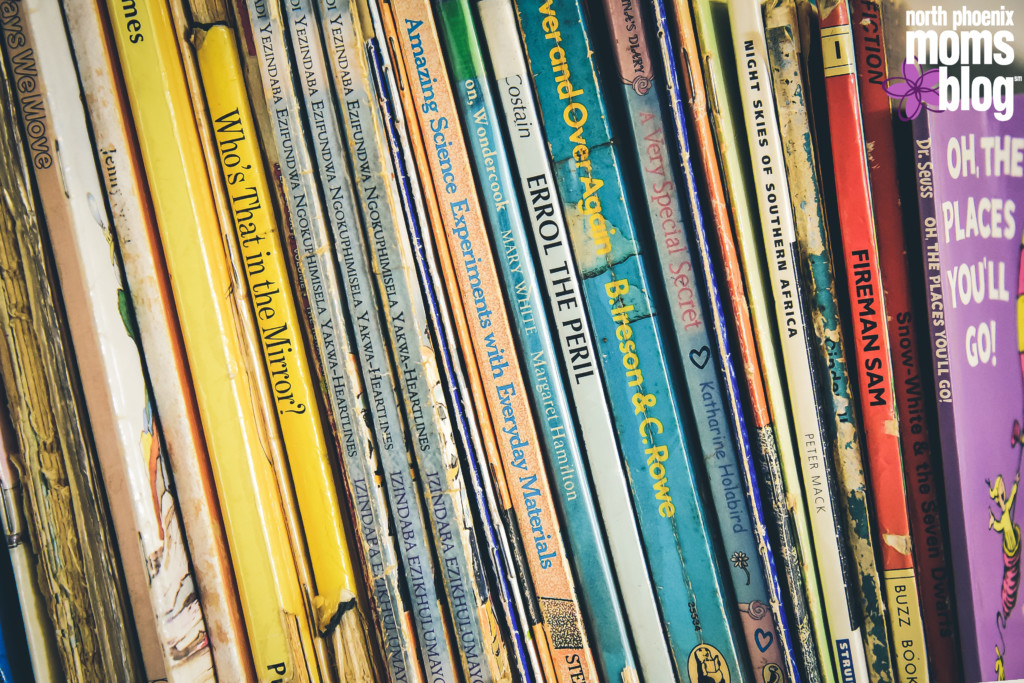Just over a month ago we welcomed a new addition to our family, a beautiful little girl Claire. As we are adjusting to being a family of five, I couldn’t help but think back to when we transitioned from one child to two. I remember one of my biggest concerns was “What in the world am I going to do with my toddler while I’m feeding the baby?” Babies demand a lot of attention, especially in those early months when they are eating every few hours. Here I was with a little boy who had been used to having my undivided attention for the past 2 years, and I wasn’t sure how I was going to keep him entertained and out of trouble during all that time spent feeding a new baby. This time around I have two little ones to keep busy (ages 2 and 4), and while I feel much more confident and experienced now, there is still that worry that all *you know what* is going to break loose as soon as the baby begins eating. If you have a new baby in the house, here are a few tips that I have learned along the way to make this process and transition smoother.
1. Keep your older child/children busy
Having a specific activity for older siblings while you are nursing a new baby can help keep things calm and trouble-free, so that you can focus on your newborn. Depending on the age and personality of your children, this may be more necessary for some than others. My son is actually quite good at playing independently while I’m nursing and I do not have to worry about him getting into things he’s not supposed to. My daughter on the other hand can be a little more needy during that time and more likely to wander off, so having something specific for her to do makes things easier. Here are some ideas of what you can have older siblings do while you feed the baby:
- Sensory bins – I posted a little while ago on sensory bins, and these are perfect for filling the time while feeding a baby. Just have one made, and when it comes time to feed the baby, simply pull it out and set it where you can see and let your children play!
- Table activities – Setting your child up at the table for an activity can keep them in one place and having fun at the same time. Make sure it is an activity they can do independently so you do not end up with a million requests for help. Some ideas are: coloring books, play dough, puzzles, painting, art boxes (fill a box with various art supplies such as glue, pipe cleaners, googly eyes, etc.), stickers. The key is to start the activity right before you need to nurse, so you maximize the amount of time they are engaged.
- Books – Story time can be a great quiet activity for nursing sessions. Set out a few books for your child to look at on their own, or if you’re good at multi-tasking (which you probably are since you’re a mom), have them sit next to you so you can read them their favorite book while you nurse.
- Active games – If you have a child that has trouble sitting still, it is possible to allow them to be active and still keep an eye on them at the same time. The key is to get involved and engage them so they‘re not just running wild. Play Simon Says or Red Light Green Light while you call out directions from the comfort of the couch. Make up an exercise game where you give them a number and a skill to do, such as “Hop on one foot 10 times” or “Do 5 jumping jacks”. Send them on a hunt such as “Find an object that is green” or “Bring me something that starts with the letter F”.
- Room time – If you have never done room time, I would definitely recommend starting, even if you don’t have a new baby! Just as the name implies, your child spends time playing alone in their room. Not only is this helpful to you because it gives you time to nurse your baby in peace, but it’s also very beneficial to your child to learn to play on their own for periods of time. If your child has never played alone before, there may be an adjustment period, but most likely they will end up loving it. To keep it more interesting, keep a few toys in the closet that only get to come out during room time and play some fun music for them. I love doing room time during nursing sessions because it allows me to nurse without distractions and avoid over stimulating the baby.
- Blanket time/floor activities – If you don’t like the idea of your child being in another room while you are nursing, blanket time can be another great option. For blanket time, set out a blanket along with a few toys for your child to play with and require them to stay on the blanket. This is a great way for your child to learn boundaries and can be especially useful for young toddlers and those prone to wandering the house when you’re not looking. For a little bit older child, you may not even need the blanket, but can simply require that they stay in the same room where you can see them. Choose toys or activities that will be interesting and engaging for them, and that can also be played with independently. Some ideas are: in and out toys, busy bags, blocks, trains and train tracks, floor puzzles, lacing beads.
- TV time – And when all else fails, don’t be afraid to turn on the TV! Especially during those early months when you are exhausted and can barely think straight, it’s ok to turn on a TV show and sit back and relax while you feed, without any additional effort on your part.
2. Have a flexible schedule
Having all of these activities is great, but it’s not always easy to just pull them out when your baby wants to eat NOW. For us, keeping a flexible schedule throughout the week works best to keep things running smoothly. It allows me to at least have some idea when the baby will need to eat, and avoid having her need a feeding right in the middle of preschool drop off or dinner time for the family. It also allows me to plan activities in advance for siblings, so I know what they will be doing during nursing sessions. Every family is going to vary on how structured they like their day to be, so do what works best for you. Here is how I go about planning a routine that will work for parents, kids, and baby.
- I start with all non-negotiable activities for older children and parents – things that have a specific start or end time that cannot be changed. This includes things like work schedules, school schedules, extra-curricular activities, etc.
- Next, I add in activities that are pretty set, but have some flexibility to be moved 15-30 min if needed. These are things like naptime, meal times, etc.
- Once I have the older kids’ basic schedules in place, then I can think about the baby’s routine. Again, the amount of structure is going to vary a lot by family and baby. What works for me is to have an approximate time I would like to start my baby’s day, and then feed every 2.5-3 hours from there. This gives us some predictability to our days, but still allows plenty of flexibility when needed. As she gets older and feedings become more consistent, I will establish set feeding times for even more predictably and consistency.
- After I have a basic schedule for both the older siblings and the baby, I can then figure out what to do with everyone while the baby eats. It’s still important to stay flexible, because babies are often unpredictable, but I at least have some idea of how our day is going to go. For example: I know baby’s first feeding will be before my other kids get up, during her second feeding I will have them do room time, her third feeding will be during naptime, for her fourth feeding I will need a table or floor activity, and her last feeding will be while my husband is doing bedtime with the big kids. If I need to move lunch time occasionally, or keep them in room time a little longer, or put on a TV show to accommodate the baby’s feedings, I can, but at least most days I don’t feel like I’m winging it all day long.
3. Prioritize
No matter how well you have prepared or how engaging of activities you have for your children, things are not always going to go as planned. There are going to be days when your baby is just off. There are going to be times that your toddler tries to eat the play dough. There are going to moments when your children will fight and argue about everything imaginable. More than likely, all of these things will happen at once. When this happens, you are going to need to perform triage and determine which need is the greatest in the moment. Sometimes you may need to set the baby down so you can attend to the needs of your older children, and other times you may need to make siblings wait while you finish feeding the baby. For minor discipline issues, you may want to wait to deal with them once the feeding is over. If one of your children is tackling the other, you may want to set the baby down and break it up. If a child gets a little paint on their shirt, it can wait until after baby eats. If a whole bottle of paint spills on the floor and the dog is licking it up, you probably want to attend to it immediately. If your toddler needs help putting the puzzle piece in the correct place, they can wait. If your newly potty trained toddler needs help going potty, your baby can wait. The baby will be fine if they need to wait a few extra minutes to eat, and your older children will be fine if they need to wait a few minutes also. (Or you can always attempt the multi-tasking approach and continue feeding your baby while dealing with these issues! I may or may not have held my nursing baby in one hand while simultaneously lifting my 2 year old onto the toilet on more than one occasion).
More than likely, once your baby arrives you will find it much easier to juggle multiple children than you thought. Both times we have added another child to our family I realized that my concerns were actually not that big of a deal and everything just fell into place. Sure, there are still moments of pure chaos, but that’s being a mom, no matter how many kids you have!













